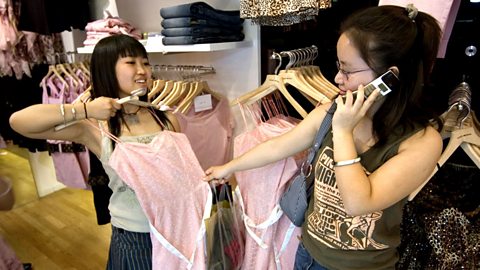How much inequality is there in China?
Not everyone has benefited from economic change in China. Today there is a very small percentage of rich people and a growing number of people who consider themselves well off.
The number of people in China who earn less than $1.90 (£1.25) per day, which is the line the World Bank uses to measure extreme poverty, has gone down by nearly 800 million. According to the World Bank, 88.1 percent of Chinese people lived on less than this in 1981. This had fallen to 0.3 percent by the end of 2018.
Measuring inequality with the Gini index
The level of income inequality within a country is measured by the Gini index. Its score (the ÔÇÿGini coefficientÔÇÖ) summarises this level of inequality. A score above 40 means inequality is high.
In 2021, ChinaÔÇÖs Gini coefficient was 46.6 (Source: Statista). This compares to 34.4 for the UK and 37.5 for the USA.
Wealth and poverty in China
How many people are wealthy in China?
A very small number of Chinese people are super rich.
In 2022, mainland China was home to 115,580 ultra high net worth families, meaning they own 100 million ¥ (Yuan) (£11.2 million) or more of assets (Source: Hurun China Wealth Report, 2022). This is less than 0.01% of the population.

The super rich own some of the best properties in China (and abroad), drive top of the range cars, access world class leisure faciliites and have expensive tastes in clothing, wine, food and luxury goods.
How many people are living in poverty in China?
In contrast, millions of poor people in China struggle to meet their needs.
In 2016 - the most recent year for which World Bank figures are available - China had 7.2 million people (0.5% of the population) living in extreme poverty (on less than $1.90 per day, based on 2011 prices).
The World Bank draws a higher poverty line of $5.50 per day for upper-middle-income countries. China is now an upper-middle-income country, says the bank. By this measure about a quarter of China's population is living in poverty.
In 2020, Chinese Premier Li Keqiang said China still had 600 million people whose monthly income was barely 1,000 ¥ (£125). He said that was not enough to rent a room in a city.
What is the urban-rural divide in China?
As well as a growing rich-poor divide in China, there is evidence of a growing urban (city) ÔÇô rural (countryside) divide.
Wealthy people are more likely to be found in the east of the country or in cities such as the capital, Beijing, or ChinaÔÇÖs most populated city, Shanghai.
In 2013, the average annual disposable income for urban households was 2.81 times that of rural households. By 2020 this had narrowed, with urban households having 2.55 time the disposable income of rural households (Source: National Bureau of Statistics of China).
Those in urban areas earned 43,834 yuan on average in 2020, with those in rural areas averaging 17,131 yuan.
Agricultural change

The Household Responsibility System (HRS) was introduced in the 1980s. It allows farmers to work the land as owners and to make a profit.
The freedom to develop their farms and sell their produce in the marketplace has meant the income of farmers has risen, as has agricultural output.
Most farmers remain relatively poor but a few have become very wealthy.